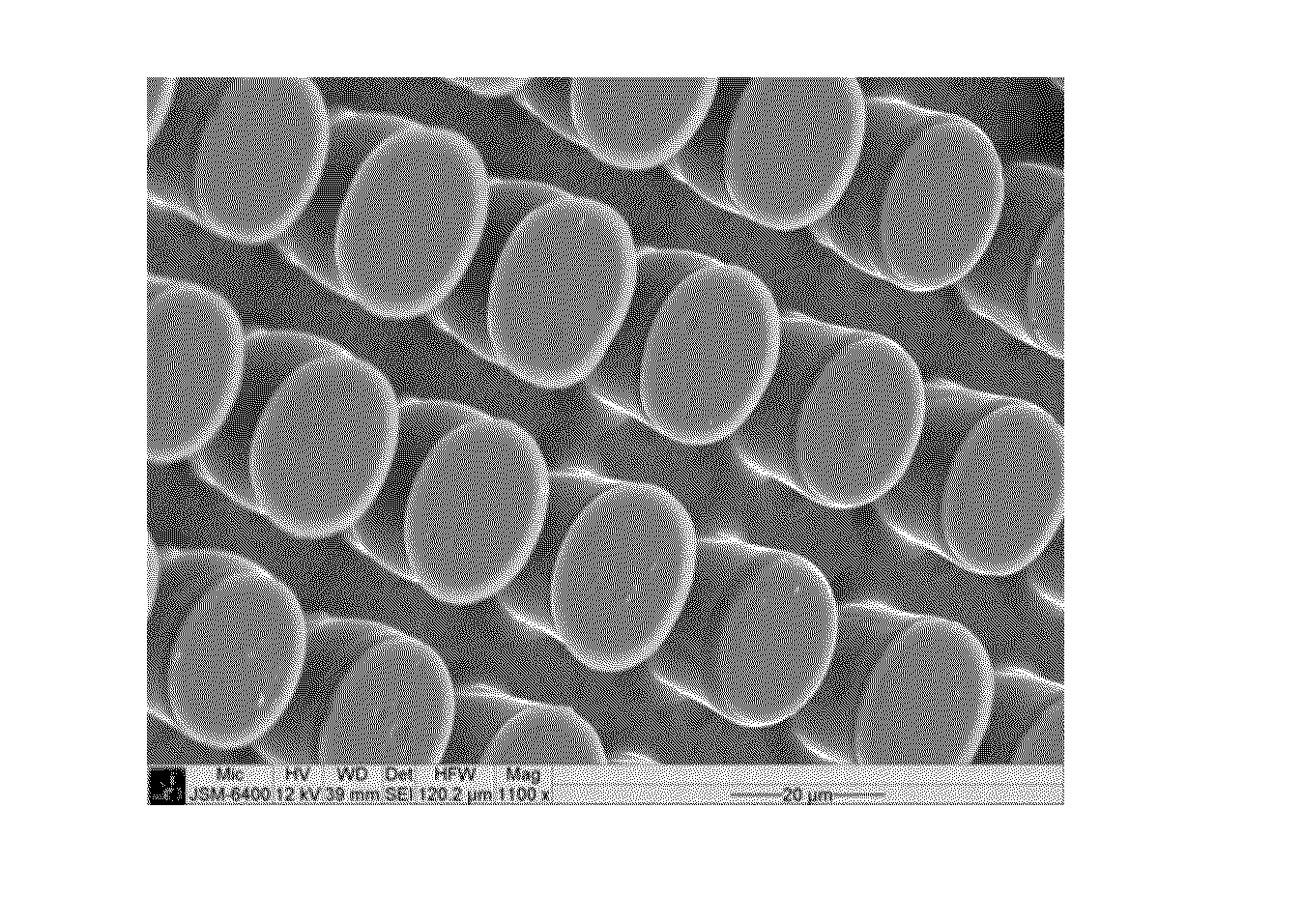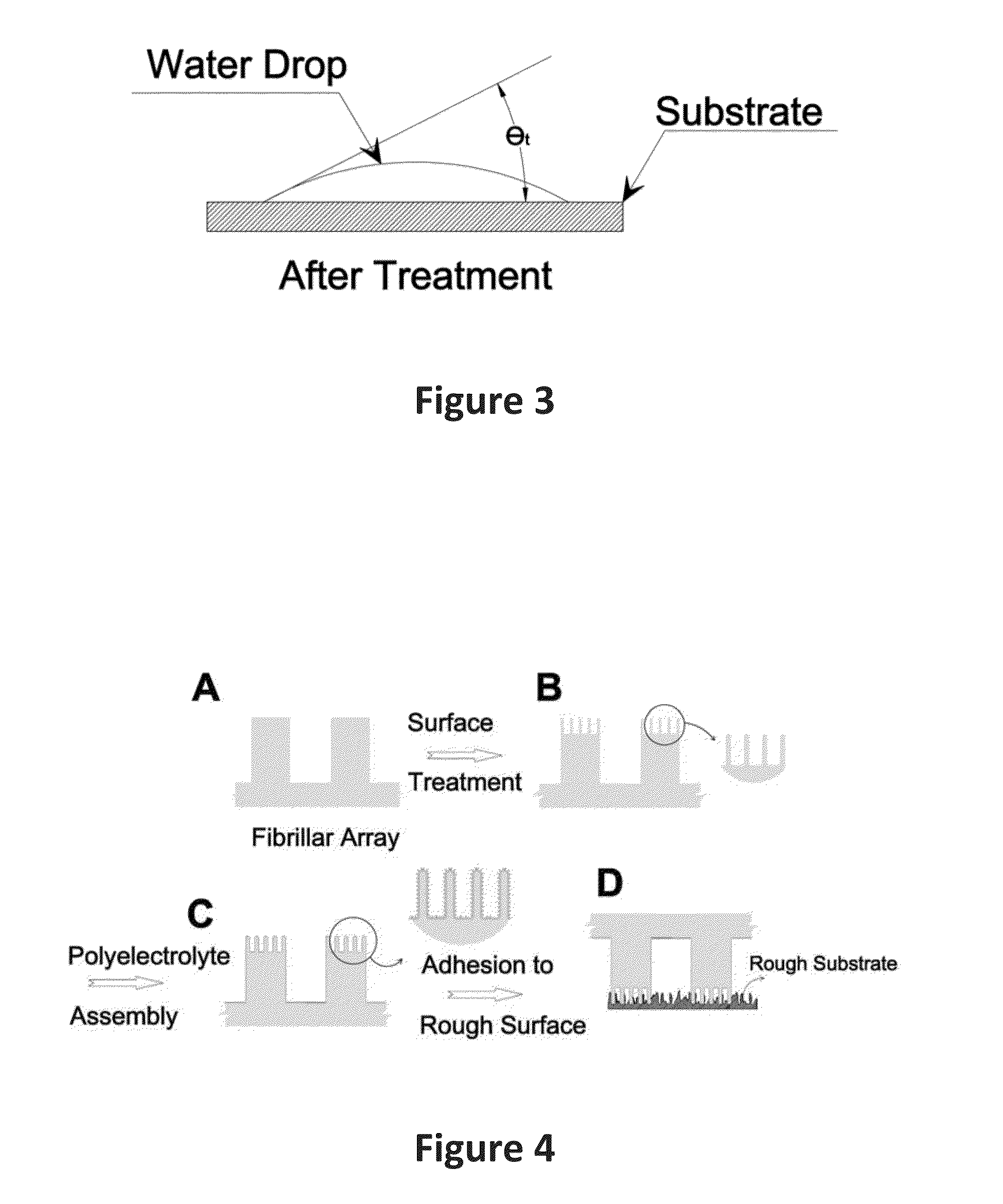Durable Hydrophilic Dry Adhesives with Hierarchical Structure and Method of Making
a hydrophilic dry adhesive and hierarchical structure technology, applied in the direction of film/foil adhesives, plasma techniques, transportation and packaging, etc., can solve the problems of surface modification of fibril tips involving uvo or plasma treatment, and the approach taken to alternation of surface properties, etc., to improve wettability, reduce water contact angle, and change the surface morphology
- Summary
- Abstract
- Description
- Claims
- Application Information
AI Technical Summary
Benefits of technology
Problems solved by technology
Method used
Image
Examples
example
[0047]Step 1: Fabrication Process of Polymer Microfibrillar Structure
[0048]Polymer microfibrillar structures were produced by soft-molding of elastomeric precursors on micro fabricated template. This approach can be used for fabrication of fibrils of any dimensions. The template was produced by the photolithographic process, which is a prevailing method of batch-transferring micro-scale patterns. In the photolithography process, an ultraviolet light shines through a two-dimensional photomask onto a light-sensitive chemical photoresist applied upon a substrate. This process removes the photoresist at undesired areas, leaving a three-dimensional (fibrillar) structure on the substrate, with a height that is equal to the thickness of the photoresist. This remaining photoresist structure is then used in a micro-molding process. For the purpose of fabricating the lithographic SU-8 templates, a glass wafer was used to prevent UV reflections during lithography. A thin layer of diluted SU-8 ...
PUM
| Property | Measurement | Unit |
|---|---|---|
| diameter | aaaaa | aaaaa |
| diameter | aaaaa | aaaaa |
| water contact angle | aaaaa | aaaaa |
Abstract
Description
Claims
Application Information
 Login to View More
Login to View More - R&D
- Intellectual Property
- Life Sciences
- Materials
- Tech Scout
- Unparalleled Data Quality
- Higher Quality Content
- 60% Fewer Hallucinations
Browse by: Latest US Patents, China's latest patents, Technical Efficacy Thesaurus, Application Domain, Technology Topic, Popular Technical Reports.
© 2025 PatSnap. All rights reserved.Legal|Privacy policy|Modern Slavery Act Transparency Statement|Sitemap|About US| Contact US: help@patsnap.com



